A Town like Addis, Xmas Without Xmas & Other Ethiopian Adventures, Part 3
The Polemicist
by Michael House, FRGS
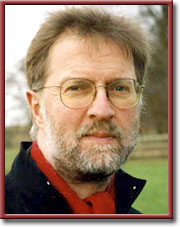 KINGS SUTTON England—(Weekly Hubris)—2/19/12—
KINGS SUTTON England—(Weekly Hubris)—2/19/12—
Day 8, 25th December, continued.
In the evening, after a 360 kilometre drive, we arrived at the Mountain View Hotel, Lalibela. At 8,745 feet, it has majestic views over a wide and deep river valley. The four-story structure is recessed from the bottom to the top, each room having its own balcony and flowerbeds.
Why is Lalibela the most popular tourist destination in Ethiopia? I want you to imagine yourself standing on top of a rock which is as big as a football field and as deep as an ocean liner. It is the 12th century, and you are the local king, with a whim of iron. You say to yourself, “What a good spot to create a church!” So, you have carved a trench in the rock in the shape of a cross, about 30 feet deep, so that there is an enormous cross-shaped chunk of rock in the middle. You then start to carve into the central rock to hollow out a church, with pillars and doors and windows. So you end up with a church carved from the solid rock, below the level of the ground. Repeat the exercise eleven times in various designs.
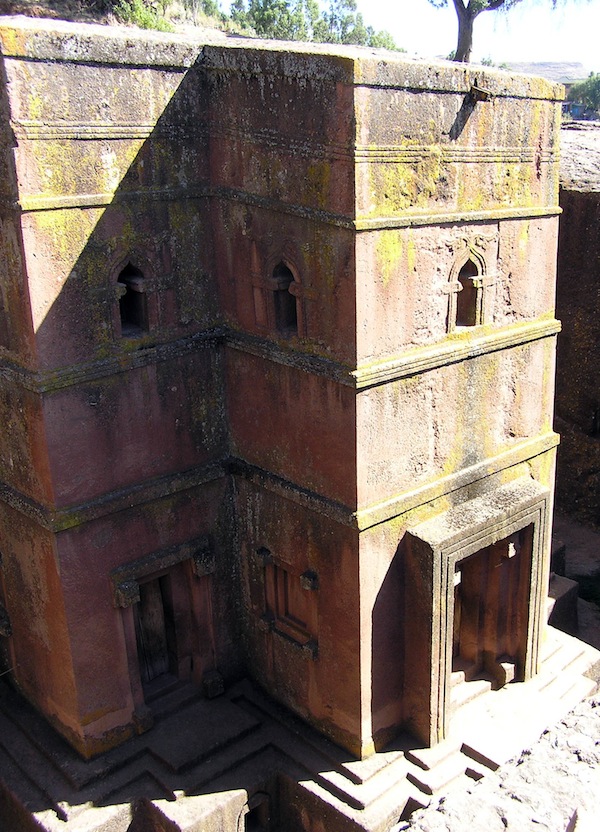
What you end up with is the Eighth Wonder of the World, a UNESCO World Heritage Site, an amazing subterranean compound of churches, linked by a tangled maze of passages and tunnels, with hermit cells and stone graves dotted about the enclosure. Each church is different, with precise carving and minute decoration. One of the earliest foreigners to visit Lalibela, Francisco Alvarez, a Portuguese missionary who came here in 1521, wrote: “It wearied me to write more of these works, because it seemed to me they will accuse me of untruth . . . there is much more than I have already written, and I have left it that they may not tax me with being falsehood.”
Day 9, 26th December.
A morning spent at the aforementioned churches. Visiting eleven churches in one morning, however phenomenal, is too many. But could we do today what they did a thousand years ago? In one of the churches, I caught a glimpse of what appeared to be an exorcism: a priest with a stick was beating the devil out of a young man.
Looking out of the hotel, we could see on a neighboring hill what looked like a giant concrete mixer. I assumed it was a building site for another hotel. However, it turned out to be a completed, futuristic restaurant. It had been created by an elderly Scottish lady called Susan, who was tired of teaching English in Addis, and wanted a new challenge. It had only been open two months, and Susan had assembled a staff of locals whose only qualifications were a cheerful attitude and a capacity for hard work. She had trained them into a highly efficient workforce. The food was superb. One of our number requested pizza, which they had never tried cooking before. The first effort was mediocre, the second better, and the third excellent. Susan’s attitude was—tell us what you want to eat, and we’ll have a crack at it. She was one of the most remarkable people we encountered in Ethiopia. Her Bubble & Squeak was superb. I regret I didn’t sample her Toad in the Hole.
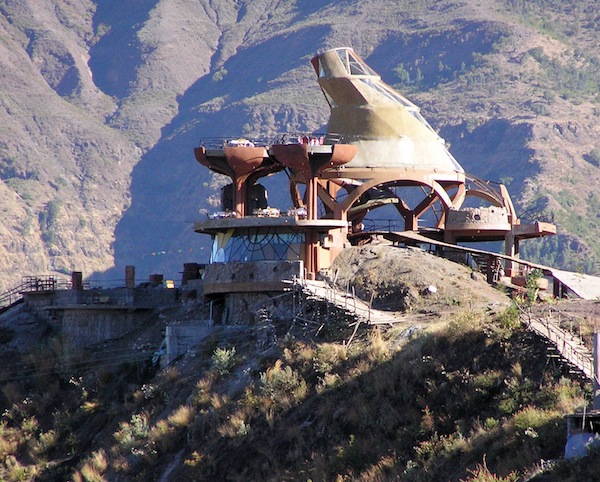
Day 10, 27th December.
Visited the monastery of Yemirhane Kristos, built in a cave under a huge chunk of granite. Again, the paintings were superb. I particularly like one painted on hide, of a Muslim shooting at a Christian who was up a tree collecting fruit. A diabolical dragon awaits its prey at the base of the tree. Then, back for lunch at Susan’s Concrete Mixer: shepherd’s pie and crepes. In the evening, we went to a local home for a traditional meal followed by the full coffee ceremony.
Day 11, 28th December.
Another highlight of the trip: two days of hiking, staying in village lodges. A long drive to the trailhead, delayed because the driver of our bus seemed to think that pouring water into the overheated radiator without coolant was a good idea. It wasn’t, the bus gave up the ghost, and we had to wait for another one. As usual, children appeared from nowhere, eager to relieve us of pens, money and plastic bottles.
We eventually got to the starting point, and enjoyed a four-mile walk across lovely landscapes, arriving at a tiny hamlet above a gorge just as the sun was setting. Our main luggage was carried by mules. The north isn’t all grotesque rock formations. There are wide alpine plateaux, edged around by near-vertical plunges into river gorges, almost dry by the end of the year.
One of the villagers had some of the undyed woollen runners I mentioned in Part 1, so I bought one for 400 birr (about £12 or $18.). After a simple meal around a smoky eucalyptus fire, we slept soundly in a round flint and mud hut with a thatched roof.
Eucalyptus was introduced by the emperor Menelik II at the end of 19th century, to combat deforestation. It is fast-growing, can be harvested every ten years and, when cut down, regrows from the roots. A proclamation was issued in 1913 to replace it with mulberry because it is a very thirsty tree, but it never happened, and eucalyptus is a prominent and pleasing feature of the Ethiopian landscape. And it makes a good fire.
These hikes from village to village are arranged in conjunction with the organization, Tourism in Ethiopia for Sustainable Future Alternatives (TESFA). They are a chance to see the country on foot rather than on wheels, and provide income to the remote village communities where hikers stay.
Day 12, 29th December.
Awoke to birdsong and fresh coffee. Chilly at 10,000 feet until the sun comes up. (By way of comparison, Ben Nevis, the highest peak in the British Isles, is a paltry 4,409 feet.) After our short stroll yesterday, today’s hike is a testing 15-odd miles, along paths that are far from easy going. We started along narrow cliff-edge paths, crossed wide prairie fields where the harvest was in full swing, along stony alleys between the hayfields, rather like Greek mule tracks but with larger and sharper stones. They are deliberately constructed for the rainy season, when paths would become impassible mud-cauldrons without a hefty rocky base. These were the “highways” of Ethiopia before the first road was built.
We visited a school, where all the children lined up to shake our hands and to be photographed. Letters and words were painted on rocks scattered about the playground, a clever form of subliminal teaching. The vitality and enthusiasm of pupils and teachers was heartwarming. It brought out the latent schoolteacher in several members of our group, who started to conduct impromptu classes in odd corners. The children, who speak the local language of Tigray, learn English before they are taught the national language, Amharic.
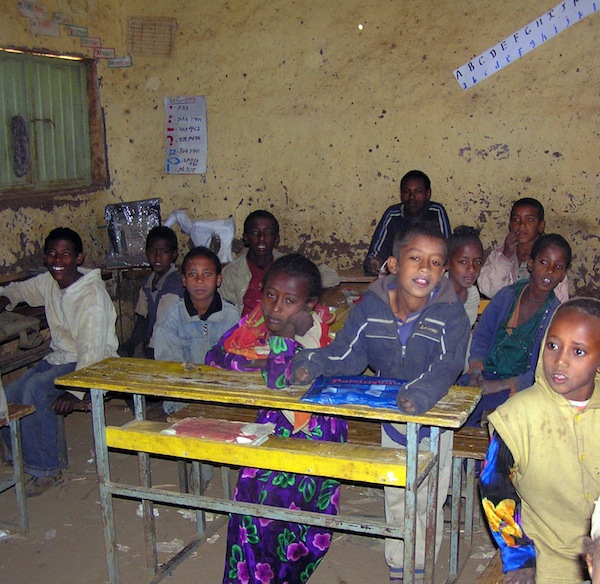
Eventually, we trudged wearily into our mountain hamlet. The view from the latrine must be one of the finest vistas from any lavatory in the world. But the steps up to the hut started about six feet from the cliff edge, so being caught short in the night was inadvisable. Another candle-lit supper around blazing eucalyptus; then bed.
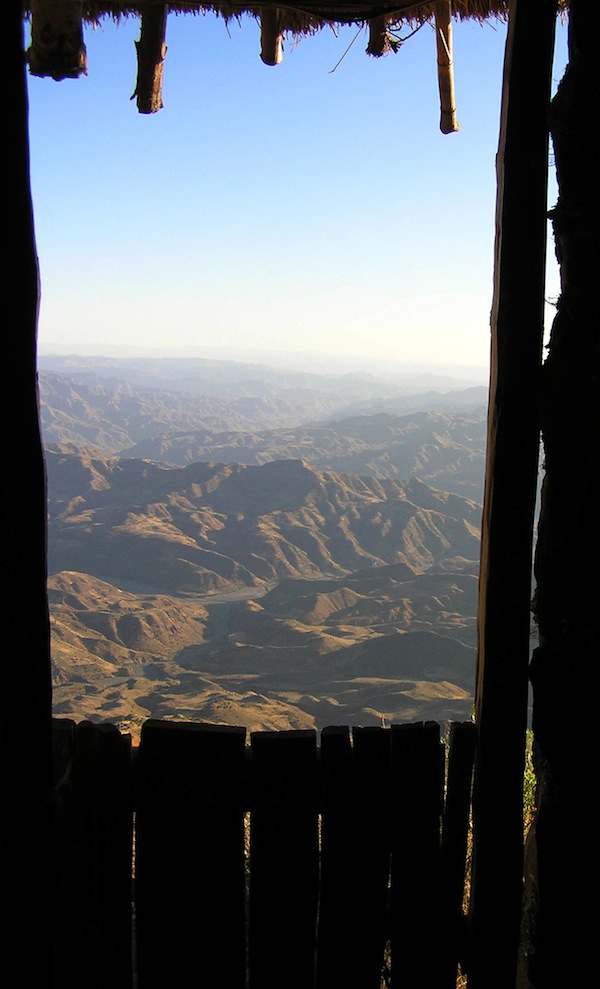
Day 13, 30th December.
Last half-day of the trek: back to the trailhead, for a long drive south to the shores of Lake Tana, the source of the Blue Nile, home of hippos, crocadiles and papyrus boats like those pictured on the scrolls of ancient Egypt.
Tana is the biggest lake in Ethiopia, and its main attraction, apart from the glorious setting, is a number of tiny islands, many of them home to ancient monasteries and churches. We visited one island, which was semi-tropical, unlike the north, with coffee bushes, brightly coloured parrots (and malarial mosquitoes). Every few yards on the path up to the church was another stall selling tourist stuff. Many had Maria Theresa thalers dated 1780 which, apart from bars of salt, were the only currency in 19th-century Ethiopia. Their high silver content and the Austrian Empress’s decolletage made them very popular. In 1868, when General Sir Robert Napier brought his invading force to rescue European hostages from mad Emperor Theodore, he had thousands of fake thalers minted. So it’s hard to tell which are genuine. I bought a splendid copper bell, which now sits on my mantle in King’s Sutton.
Another highlight of Lake Tana was the flight of the pelicans. We stayed at Bahir Dar on the southern tip of the lake, near where the Blue Nile flows out and, on two days, as we were having our lunch at a lakeside restaurant, a long line of pelicans flew across from right to left in front of us, in perfect line formation. I stopped counting at 50.
A disappointment was one of Africa’s most spectacular waterfalls, the Tis Isat (“Water that Smokes”), about 20 miles from Tana, where the Nile plunges 150 feet down a sheer rock face. The river is 1,300 feet wide above the waterfall, narrowing to just 120 feet. The opening of a recent hydro-electric plant means that the thundering waters with the spray and rainbows are now reduced to a trickle, as 95 percent of the water has been diverted. Apparently, the plant is turned off on Sunday mornings, for the tourists and, occasionally, for visiting big-shots. Not worth a detour, and potentially tragic for the nascent tourist industry at Bahir Dar.
This is a wonderful country. The people, the landscapes, the culture, the history, the animals, and the birds all combine to make it a fantastic holiday destination. It is most certainly not the land of desert and famine of Western myth.
![]()
PS Normal polemical service will be resumed shortly. The Chinese continue to murder Tibetans; Bashar Assad of Syria continues to slaughter his people, protected in the United Nations by the dictators who rule Russia and China; Spanish fascists persecute a brave judge who tried to expose the horrors of the Franco regime. And here in the UK, millionaire premier Cameron makes the poor pay for the financial crisis while the people who created it continue to reward themselves with seven-figure bonuses. In the US, uber-loony presidential candidate Ron Paul talks of “honest rape.” You couldn’t make it up.
6 Comments
eboleman-herring
OK, OK: I know–views, history, great sites, churches. But what I really want to do is visit the Concrete Mixer Restaurant!! :-) Elizabeth
eboleman-herring
PS Where are “we” going next, Michael???
Michael House
At the current state of our finances, a weekend in Slough.
trionfale
Thank you for a beautiful return to this magical place…though doing the historical overland is like no other travel experience, so many nooks and crannies along the way. BTW, Lalibela is a hallowed pilgrimage site for Christian Ethiopians as our visit with friends attested; the reverence with which they “lived” the New Jerusalem was an insight into the workings of a more “holistic” faith. Ethiopia continues still to slumber forgotten by and forgetting the rest of us, alas (to paraphrase Gibbon); but those of us who love this place should continue support of those within who cherish more democratic processes as the government of Meles Zenawi becomes increasingly repressive…
eboleman-herring
Even Slough beats the Slough of Despond??? (Which is where I always picture Lear’s Akond of Swat vacationing.)
Michael House
C.f John Betjeman’s poem:
“Come, friendly bombs and fall on Slough
It isn’t fit for humans now….”